
BMW 3 Series

Model Overview
The BMW 3 Series established the compact sport sedan segment and went on to become one of the most desirable car nameplates in the world. While BMW has shifted the 3 Series' focus to appeal to a wider luxury car audience, it remains a top choice among driving enthusiasts for sharp handling in a practical package, bolstered by the availability of a station wagon body style.
Photos




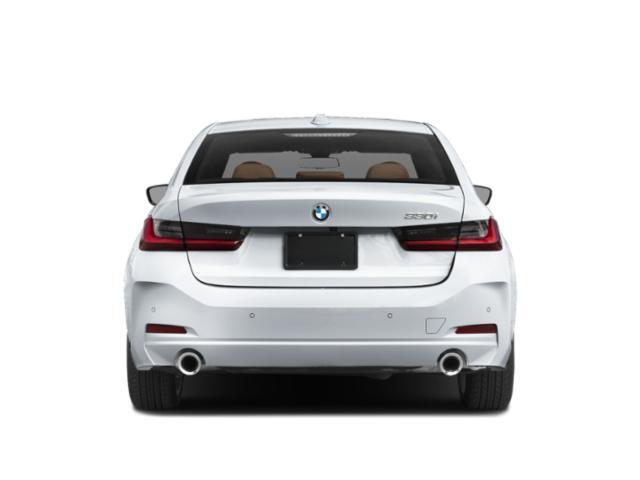

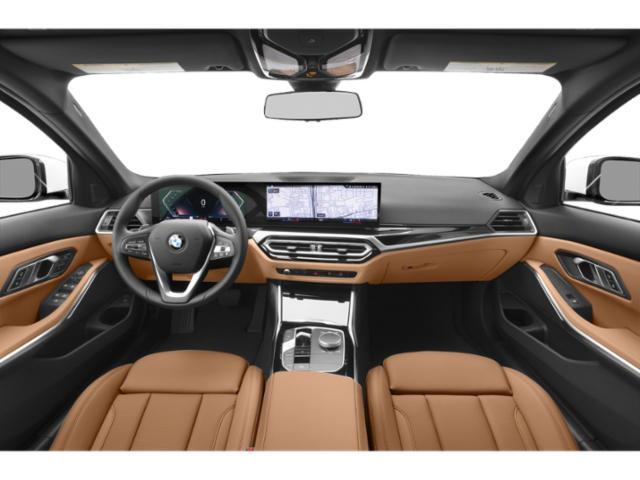
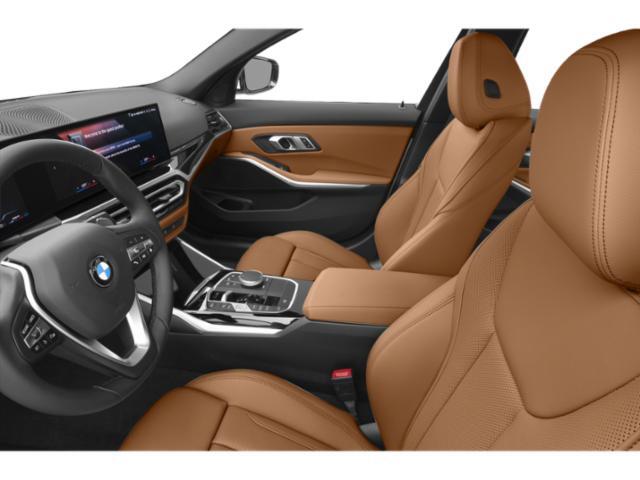
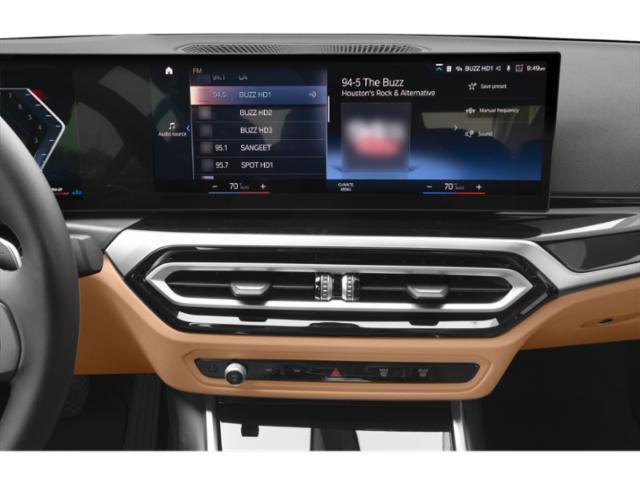
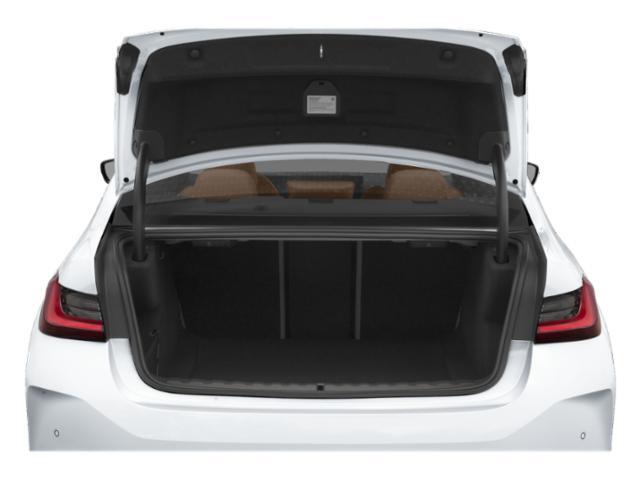
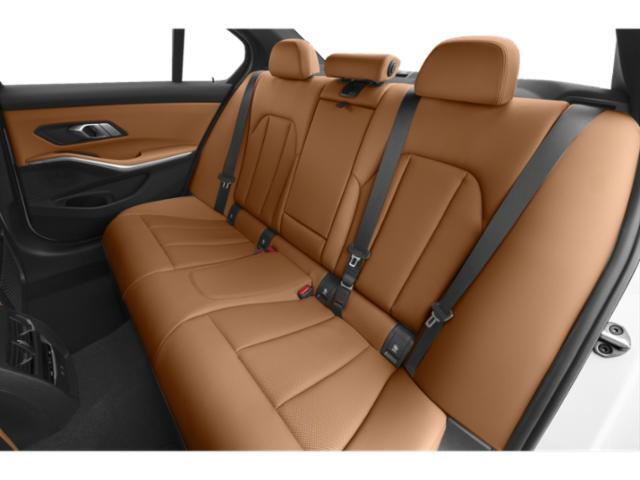
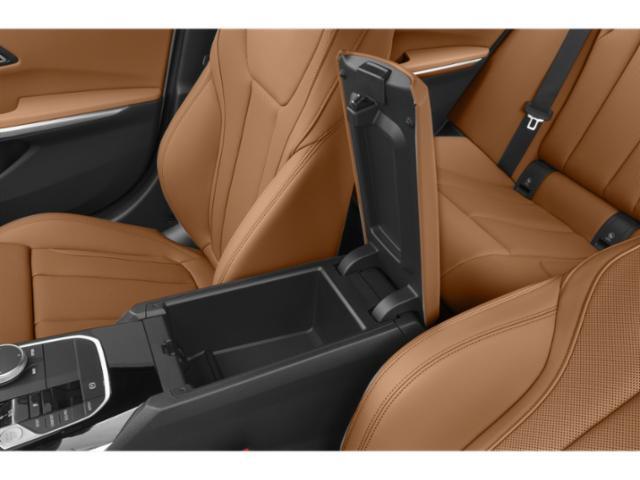
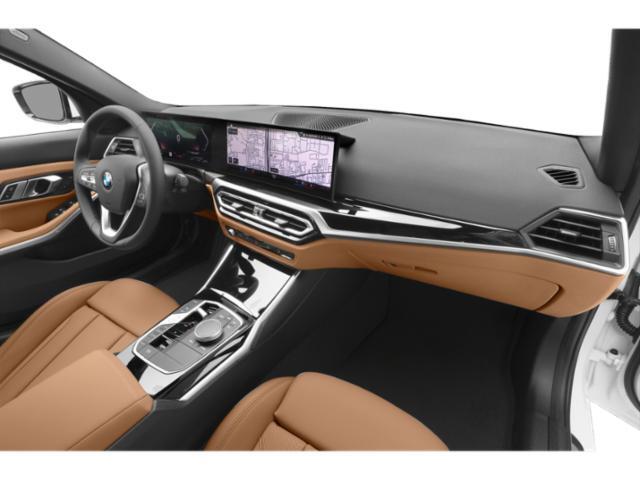
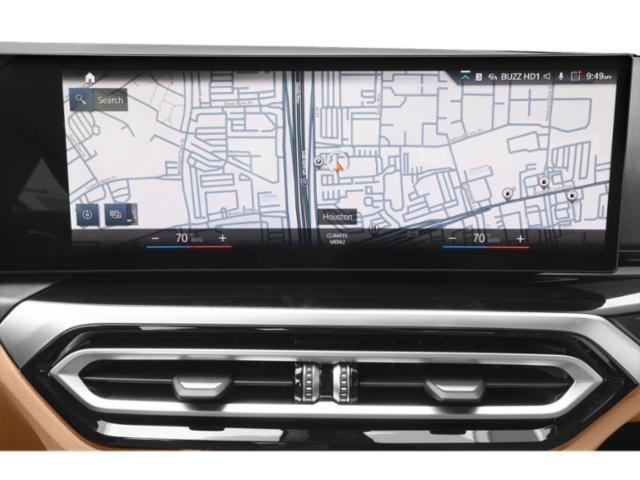




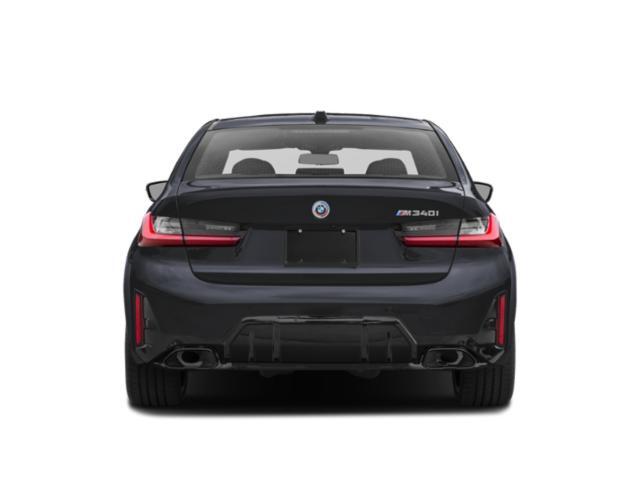

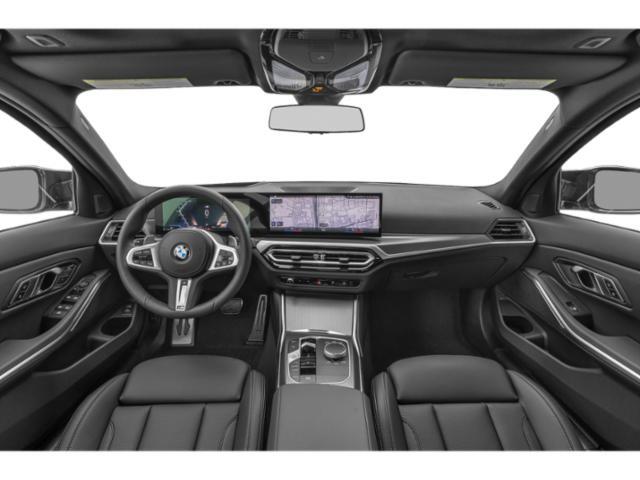

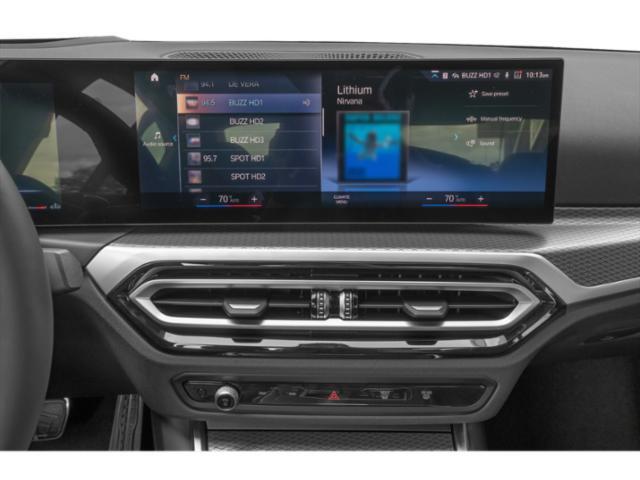
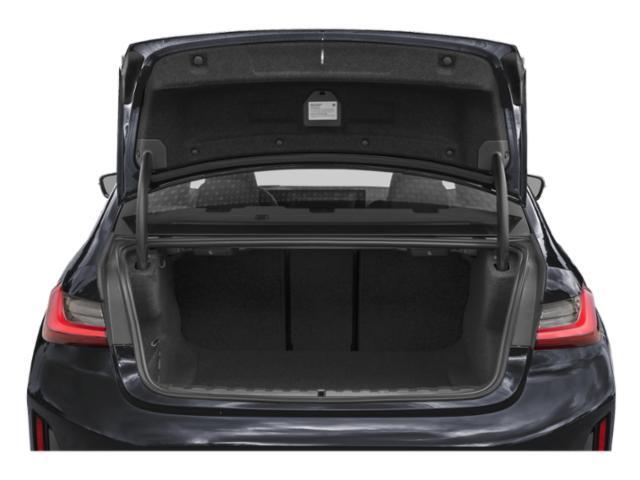
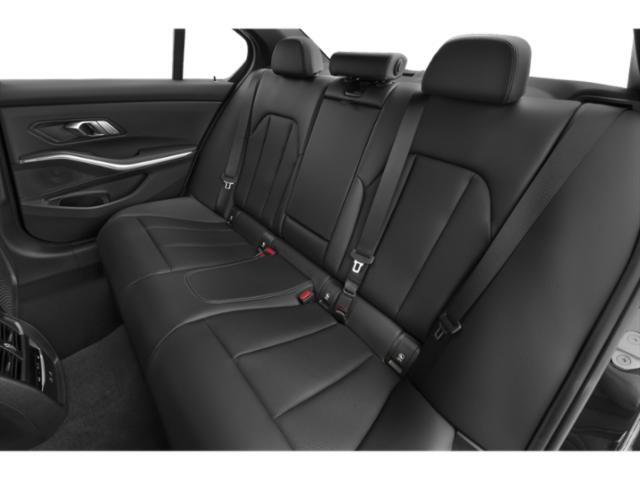

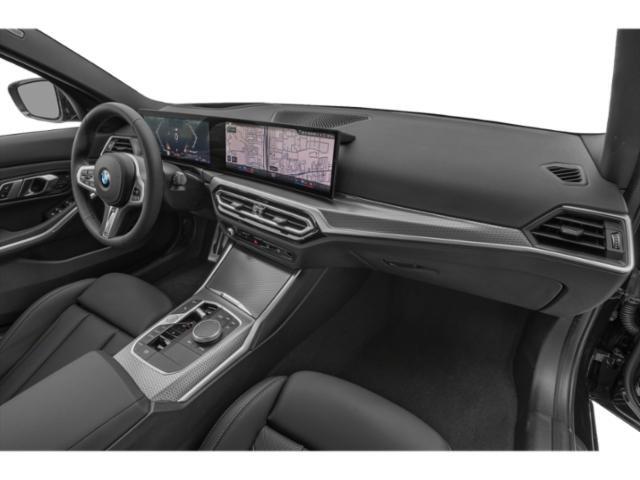





























Reviews and News
Owner Scores
Comfort
N/A
Performance
N/A
Fuel Economy
N/A
Interior Design
N/A
Exterior Styling
N/A
Reliability
N/A
Owner Reviews
3355961
Amazing 335 in BMW
September 08, 2018
335ix
Overall Score
The car drives like a dream
Amazing acceleration
Comfort amazing
When you need to pass on the highway......lots of power
Wow was really impressed
Comfort
10
Performance
10
Fuel Economy
10
Interior Design
10
Exterior Styling
10
Reliability
10
Recall Information
* Data provided by Transport Canada
Recall number
Recall date
System affected
Model year(s) affected
Recall number
2025-168
Recall date
2025-04-01
System affected
Electrical
Model year(s) affected
2025
Manufacturer Recall Number:
12 82 25RC / 12 83 25RC
Units Affected:
220
Notification Type:
Safety Mfr
Issue:
On certain vehicles, the power connector for the starter-generator may not have been manufactured properly. As a result, the connection between the connector and the positive battery cable may be loose. If this happens, there could be a loss of power to the wheels and/or the connection could overheat.
Safety Risk:
A loss of power to the wheels could increase the risk of a crash. Wiring that overheats could increase the risk of a fire.
Corrective Actions:
BMW will notify owners by mail and advise you to take your vehicle to a dealership. For certain vehicles, the dealer will replace the starter-generator and positive battery cable. For other vehicles, the dealer will inspect and, if necessary, replace the starter-generator and positive battery cable.
Recall number
2024-544
Recall date
2024-08-15
System affected
Label
Model year(s) affected
2009 2010 2011 2012 2013 2014 2015 2016 2017 2018 2019 2020 2021 2022 2023 2024
Manufacturer Recall Number:
Units Affected:
587,250
Notification Type:
Inconsequential
Issue:
On certain vehicles, the tire and loading information label does not list that there is no spare tire in both official languages. The label reads as "NONE" when it should read as "NONE / AUCUN". Canadian regulations require the information to be listed on the label in both English and French.
Safety Risk:
This error does not affect vehicle safety.
Corrective Actions:
This is not a recall. The company has corrected the tire and loading information label for all new vehicles.
Recall number
2024-468
Recall date
2024-08-13
System affected
Engine
Model year(s) affected
2012 2013 2014 2015 2016
Manufacturer Recall Number:
11 83 24RC
Units Affected:
78,381
Notification Type:
Safety Mfr
Issue:
On certain vehicles, fluid from the positive crankcase ventilation (PCV) system could leak on the intake air hose. As a result, the fluid could enter the electrical connector for the water pump and cause a short circuit.
Safety Risk:
A short circuit can create the risk of a fire, even while the vehicle is parked and turned off.
Corrective Actions:
To reduce the safety risk, BMW advises you to park your vehicle outdoors and away from other vehicles or structures until the recall repairs are completed. BMW will notify owners by mail and advise you to take your vehicle to a dealership to inspect and, if necessary, replace the water pump and electrical connector. The dealer will also install a shield on the connector.
Recall number
2024-444
Recall date
2024-08-01
System affected
Electrical
Model year(s) affected
2020
Manufacturer Recall Number:
12 83 24RC
Units Affected:
11,802
Notification Type:
Safety Mfr
Issue:
On certain vehicles, if you try to start the engine repeatedly, the starter could overheat. If this happens, and nearby components contact the starter, it could cause a fire.
Safety Risk:
A fire can create the risk of injury.
Corrective Actions:
BMW will notify owners by mail and advise you to take your vehicle to a dealership to update the vehicle software.
Recall number
2024-402
Recall date
2024-07-11
System affected
Airbag
Model year(s) affected
2014
Manufacturer Recall Number:
32 84 24RC
Units Affected:
312
Notification Type:
Safety Mfr
Issue:
On certain vehicles, the driver-front airbag inflator could rupture when the airbag deploys in a crash. If this happens, the airbag may not properly inflate and fragments could be propelled toward vehicle occupants.
Safety Risk:
An airbag inflator that ruptures can create a risk of injury or death.
Corrective Actions:
BMW will notify owners by mail and advise you to take your vehicle to a dealership to replace the driver-front airbag module.
Recall number
2024-392
Recall date
2024-07-03
System affected
Airbag
Model year(s) affected
2006 2007 2008 2009 2010 2011 2012
Manufacturer Recall Number:
32 82 24RC / 32 83 24RC
Units Affected:
44,131
Notification Type:
Safety Mfr
Issue:
This recall applies to vehicles that may be equipped with a replacement sport or M-sport steering wheel that has a Takata airbag. Long-term exposure to high absolute humidity and temperature, combined with high temperature cycling, may eventually degrade the propellant contained in the driver-front airbag. This could cause the airbag to deploy with more force than normal. If the airbag inflator ruptures, fragments could be propelled toward vehicle occupants or cause damage to the airbag assembly, preventing its proper function.
Safety Risk:
If the vehicle is involved in a crash requiring an airbag deployment, the airbag inflator could rupture and create a risk of injury.
Corrective Actions:
BMW will notify owners by mail and advise you to take your vehicle to a dealership to inspect and, if necessary, replace the driver-front airbag module.
To learn if your vehicle is affected by this recall, owners may:
• Visit https://www.bmw.ca/en/ssl/VehicleRecall.html
• Contact your preferred or local BMW Retailer
• Call BMW Customer Relations Recall Services at 1-855-217-3002
Recall number
2023-646
Recall date
2023-12-06
System affected
Powertrain
Model year(s) affected
2023
Manufacturer Recall Number:
24 82 23RC
Units Affected:
79
Notification Type:
Safety Mfr
Issue:
On certain vehicles, the integrated transmission control unit (ITCU) may not be sealed properly. As a result, transmission oil could leak into the unit and cause the transmission gears to seize. If this happens, there could be a loss of power to the wheels.
Safety Risk:
A loss of power to the wheels could increase the risk of a crash.
Corrective Actions:
BMW will notify owners by mail and advise you to take your vehicle to a dealership to replace the ITCU. The dealer will also inspect the transmission fluid and replace it, if necessary.
Recall number
2023-568
Recall date
2023-10-20
System affected
Engine
Model year(s) affected
2010 2011
Manufacturer Recall Number:
11 83 23RC
Units Affected:
21,475
Notification Type:
Safety Mfr
Issue:
On certain vehicles, the variable camshaft timing (VANOS) adjustment unit housing bolts could loosen or break. As a result, the camshaft could become incorrectly adjusted and cause the engine to enter a reduced power mode (limp mode) or to stall while driving.
Safety Risk:
A sudden loss of engine power could increase the risk of a crash.
Corrective Actions:
BMW will notify owners by mail and advise you to take your vehicle to a dealership to replace the VANOS bolts.
Recall number
2023-463
Recall date
2023-08-16
System affected
Lights And Instruments
Model year(s) affected
2019
Manufacturer Recall Number:
65 88 23RC
Units Affected:
16
Notification Type:
Compliance Mfr
Issue:
On certain vehicles, the seat belt reminder chime may be delayed if you begin driving, and your
your seat belt is not buckled. Canadian regulations require both a seat belt reminder sound and visual tell-tale when a driver is not wearing their seat belt.
Safety Risk:
A seat belt warning that doesn't work correctly may not remind you to buckle your seat before driving. Not wearing your seat belt can increase the risk of injury in a crash.
Corrective Actions:
BMW will notify owners by mail and advise you to take your vehicle to a dealership to update the Receiver Audio Module software.
Recall number
2023-093
Recall date
2023-02-24
System affected
Electrical
Model year(s) affected
2023
Manufacturer Recall Number:
61 82 23RC
Units Affected:
36
Notification Type:
Safety Mfr
Issue:
This recall is for certain vehicles that had the body domain controller (BDC) electronic control unit (ECU) replaced during a dealer service visit.
On certain vehicles, a programming error in the replacement BDC ECU could cause the automatic door locking function not to work. As a result, a door that is not locked could open in a severe crash.
Safety Risk:
A door that opens in a crash could increase the risk of injury.
Corrective Actions:
BMW will notify owners by mail and instruct you to take your vehicle to a dealership to reprogram the BDC ECU. To reduce the safety risk, BMW recommends that you should manually lock all doors before each trip until the recall repairs have been completed.
Recall number
2022-574
Recall date
2022-10-07
System affected
Visual System
Model year(s) affected
2023
Manufacturer Recall Number:
65 86 22RC
Units Affected:
203 - Recall Completed - All Units Repaired
Notification Type:
Compliance Mfr
Issue:
On certain vehicles, a small part of the rearview camera image could be blocked. Canadian regulations require the full rearview image to display while the transmission is in reverse gear.
Safety Risk:
A rearview camera image that is not completely visible on the display could reduce a driver's ability to see behind the vehicle while backing up. This could increase the risk of a crash.
Corrective Actions:
BMW will notify owners by mail and instruct you to take your vehicle to a dealership to update the rearview camera software.
Recall number
2022-095
Recall date
2022-03-02
System affected
Engine
Model year(s) affected
2006 2007 2008 2009 2010 2011 2012 2013
Manufacturer Recall Number:
11 80 22RC
Units Affected:
98,111
Notification Type:
Safety Mfr
Issue:
On certain vehicles equipped with an N52 or N52K 6-cylinder engine, a manufacturing problem could cause the PCV valve heater (blow-by heater) to short circuit and overheat.
Note: This replaces Transport Canada recalls 2017-470 and 2019-170. Only vehicles equipped with an N52 or N52K engine require this repair.
Safety Risk:
An overheated engine PCV valve heater could create the risk of a fire, even while the vehicle is parked and turned off.
Corrective Actions:
BMW will notify owners by mail and instruct you to take your vehicle to a dealer to install a wire harness repair kit. BMW recommends that you should park your vehicle outdoors until the recall repairs have been completed.
Recall number
2021-479
Recall date
2021-08-03
System affected
Brakes
Model year(s) affected
2020
Manufacturer Recall Number:
12 84 21RC
Units Affected:
3,506
Notification Type:
Safety Mfr
Issue:
On certain vehicles, a software problem could cause the vacuum pump to be damaged during engine starting. If this happens, there could be a loss of brake assist. This can cause an increase in brake pedal effort and increase the distance needed to stop the vehicle.
Safety Risk:
A sudden increase in brake pedal force could lead to an increased stopping distance. This could increase the risk of a crash.
Corrective Actions:
BMW will notify owners by mail and instruct you to take your vehicle to a dealer to update the engine management software.
Recall number
2021-469
Recall date
2021-07-29
System affected
Fuel Supply
Model year(s) affected
2014 2015 2016 2017 2018
Manufacturer Recall Number:
13 80 21RC
Units Affected:
3,481
Notification Type:
Safety Mfr
Issue:
On certain vehicles equipped with a diesel engine, the high-pressure fuel pump may wear prematurely. This can cause reduced engine performance and could lead to a sudden engine stall.
Note: A warning lamp on the instrument cluster will turn on if the fuel pressure drops.
Safety Risk:
A loss of engine power could increase the risk of a crash.
Corrective Actions:
BMW will notify owners by mail and instruct you to take your vehicle to a dealer to replace the high-pressure fuel pump.
Recall number
2021-354
Recall date
2021-05-27
System affected
Airbag
Model year(s) affected
1999 2000
Manufacturer Recall Number:
32 82 21RC
Units Affected:
346
Notification Type:
Safety Mfr
Issue:
This recall is for vehicles that had an inspection performed under recall 2019-599, 2019-600 or 2019-601, but where the airbag inflator was not replaced. This new recall will provide replacement of the airbag inflator.
On certain cars, exposure to moisture over time could cause the driver-front airbag not to inflate properly in a crash. In some cases, this could cause an airbag not to fully inflate, while in others it could cause it to deploy with more force than normal. It could also cause the inflator to rupture. If the airbag inflator ruptures, small pieces of metal could be propelled toward vehicle occupants or cause damage to the airbag and prevent its proper function.
Safety Risk:
In a crash requiring an airbag deployment, the driver-front airbag may not inflate properly or the inflator could rupture. This could create a risk of injury.
Corrective Actions:
BMW will notify owners by mail and instruct you to take your car to a dealer to replace the driver-front airbag inflator.
Recall number
2021-093
Recall date
2021-02-24
System affected
Steering
Model year(s) affected
2012 2013 2014 2015
Manufacturer Recall Number:
32 81 21RC
Units Affected:
1,519
Notification Type:
Safety TC
Issue:
On certain vehicles, the bolts that attach the electric power steering assist motor to the steering gear may corrode and break. This could cause a loss of power steering assist.
Safety Risk:
A loss of power steering assist may result in a sudden increase in steering effort, especially at low vehicle speeds. This could increase the risk of a crash.
Corrective Actions:
BMW will notify owners by mail and instruct you to take your vehicle to a dealer to replace the bolts and apply a wax sealer. If one or more of the bolts are broken or missing, a new steering gear will be installed.
Recall number
2021-078
Recall date
2021-02-18
System affected
Visual System
Model year(s) affected
2019 2020 2021
Manufacturer Recall Number:
66 80 21RC
Units Affected:
2,263
Notification Type:
Compliance Mfr
Issue:
On certain vehicles, a software problem could cause the rearview camera image not to appear correctly in the central display. Canadian regulations require the rearview image to display when the transmission is shifted into reverse gear.
Safety Risk:
A rearview camera image that does not display correctly could reduce a driver's ability to see behind the vehicle while backing up. This could increase the risk of a crash.
Corrective Actions:
BMW will notify owners by mail and instruct you to take your vehicle to a dealer to update the rearview camera software, if necessary.
Recall number
2021-061
Recall date
2021-02-10
System affected
Brakes
Model year(s) affected
2021
Manufacturer Recall Number:
34 80 21RC
Units Affected:
45
Notification Type:
Safety Mfr
Issue:
On certain vehicles, an internal part in the integrated brake system could fail during hard braking. If this happens, there would be a reduction in brake boost and the antilock brake system (ABS) would turn off. This can cause an increase in brake pedal effort that is required to stop the vehicle.
Safety Risk:
A sudden increase in brake pedal force and a loss of ABS braking could lead to an increase in stopping distance. This could increase the risk of a crash.
Corrective Actions:
BMW will notify owners by mail and instruct you to take your vehicle to a dealer replace the integrated brake system (hydraulic unit and master cylinder).
Recall number
2020-464
Recall date
2020-09-30
System affected
Electrical
Model year(s) affected
2021
Manufacturer Recall Number:
61 87 20RC / M61 86 20RC
Units Affected:
194
Notification Type:
Safety Mfr
Issue:
On certain plug-In hybrid electric vehicles (PHEV), debris may have entered the high-voltage battery during production. As a result, the battery could short circuit.
Safety Risk:
A short circuit in the battery could create a fire risk.
Corrective Actions:
BMW will notify owners by mail. The corrective actions for this recall are under development. BMW recommends that you should not charge your vehicle and that you should not drive the vehicle in manual mode, sport mode or use the shift paddles until the recall repairs have been completed. BMW also recommends that you should drain the high-voltage battery via iDrive, by setting/leaving the charging state at 30%, until the recall repairs have been completed.
Recall number
2020-385
Recall date
2020-08-18
System affected
Powertrain
Model year(s) affected
2021
Manufacturer Recall Number:
61 82 20RC & M61 83 20RC
Units Affected:
84
Notification Type:
Safety Mfr
Issue:
On certain Plug-In Hybrid Electric Vehicles (PHEV), weld beads may not have been removed from the high voltage battery during assembly. As a result, during the initial charge to at least 80% of capacity, the weld beads could cause a short circuit between the battery cells.
Safety Risk:
A short circuit could create the risk of a fire.
Corrective Actions:
BMW will notify owners by mail and instruct you to take your vehicle to a dealer to inspect the high voltage battery. The battery modules will be replaced, if necessary.
Note: Only one of the affected vehicles was sold to a retail customer. Dealers will inspect and repair all other vehicles before they are sold.
Recall number
2020-267
Recall date
2020-06-16
System affected
Steering
Model year(s) affected
2019 2020
Manufacturer Recall Number:
Units Affected:
1,018
Notification Type:
Safety Mfr
Issue:
On certain vehicles, high temperatures and excessive vibration could cause damage to the steering tie rods. If this happens, the tie rods could break. This could result in a loss of steering control.
Safety Risk:
A loss of steering control could create a risk of a crash.
Corrective Actions:
BMW will notify owners by mail and instruct you take your vehicle to a dealer to replace the steering tie rods.
Recall number
2020-009
Recall date
2020-01-15
System affected
Airbag
Model year(s) affected
2000 2001 2002 2003 2004 2005 2006
Manufacturer Recall Number:
72 80 20RC
Units Affected:
20,070
Notification Type:
Safety Mfr
Issue:
This recall is for certain vehicles that had an airbag inflator replaced as a part of an earlier recall campaign. This recall provides a final repair.
Long-term exposure to high absolute humidity and temperature, combined with high temperature cycling, may eventually degrade the propellant contained in the passenger-front airbag. This could cause the airbag to deploy with more force than normal. If the airbag inflator ruptures, fragments could be propelled toward vehicle occupants or cause damage to the airbag assembly, preventing its proper function.
Safety Risk:
If the vehicle is involved in a crash requiring an airbag deployment, the airbag inflator could rupture and create a risk of injury.
Corrective Actions:
Owners will be notified by mail and instructed to take their vehicle to a dealer to inspect the passenger-front airbag module. The passenger-front airbag module will be replaced as necessary. Note: The Canadian climate results in the propellant degrading slowly. This recall is being conducted as a precaution to address future risk. It is expected that all airbag inflators will be replaced before their function would be affected.
Recall number
2020-008
Recall date
2020-01-15
System affected
Airbag
Model year(s) affected
2008 2009 2010 2011 2013
Manufacturer Recall Number:
32 80 20RC / 32 81 20RC
Units Affected:
47
Notification Type:
Safety Mfr
Issue:
This recall is for certain vehicles that had an airbag inflator replaced as a part of an earlier recall campaign. This recall provides a final repair.
Long-term exposure to high absolute humidity and temperature, combined with high temperature cycling, may eventually degrade the propellant contained in the driver-front airbag. This could cause the airbag to deploy with more force than normal. If the airbag inflator ruptures, fragments could be propelled toward vehicle occupants or cause damage to the airbag assembly, preventing its proper function.
Safety Risk:
If the vehicle is involved in a crash requiring an airbag deployment, the airbag inflator could rupture and create a risk of injury.
Corrective Actions:
Owners will be notified by mail and instructed to take their vehicle to a dealer to inspect the driver-front airbag inflator. The driver-front airbag module or inflator will be replaced as necessary. Note: The Canadian climate results in the propellant degrading slowly. This recall is being conducted as a precaution to address future risk. It is expected that all airbag inflators will be replaced before their function would be affected.
Recall number
2019-600
Recall date
2019-11-26
System affected
Airbag
Model year(s) affected
1999 2000
Manufacturer Recall Number:
32 86 19RC
Units Affected:
2,757
Notification Type:
Safety Mfr
Issue:
On certain cars, exposure to moisture over time could cause the driver-front airbag not to inflate properly in a crash. In some cases, this could cause an airbag not to fully inflate, while in others it could cause it to deploy with more force than normal. It could also cause the inflator to rupture. If the airbag inflator ruptures, small pieces of metal could be propelled toward vehicle occupants or cause damage to the airbag and prevent its proper function.
Note: This recall affects cars built between March 25, 1998 and November 10, 1999.
Safety Risk:
In a crash requiring an airbag deployment, the driver-front airbag may not inflate properly or the inflator could rupture. This could create a risk of injury.
Corrective Actions:
BMW will notify owners by mail. There may be a significant delay before replacement parts are available. BMW will send you a second letter once replacement parts are available and instruct you to take your car to a dealer to inspect the driver-front airbag inflator. If the inflator requires replacement, a newly design part will be installed.
Note: BMW has not advised owners of vehicles affected by this recall to stop using their cars.
Recall number
2019-599
Recall date
2019-11-26
System affected
Airbag
Model year(s) affected
2000 2001
Manufacturer Recall Number:
32 85 19RC
Units Affected:
5,459
Notification Type:
Safety Mfr
Issue:
On certain cars, exposure to moisture over time could cause the driver-front airbag not to inflate properly in a crash. In some cases, this could cause an airbag not to fully inflate, while in others it could cause it to deploy with more force than normal. It could also cause the inflator to rupture. If the airbag inflator ruptures, small pieces of metal could be propelled toward vehicle occupants or cause damage to the airbag and prevent its proper function.
Note: This recall affects cars built between May 22, 1999 and June 20, 2000. While the car was not built with an affected airbag inflator, it may have had one installed if the steering wheel airbag was replaced.
Safety Risk:
In a crash requiring an airbag deployment, the driver-front airbag may not inflate properly or the inflator could rupture. This could create a risk of injury.
Corrective Actions:
BMW will notify owners by mail. There may be a significant delay before replacement parts are available. BMW will send you a second letter once replacement parts are available and instruct you to take your car to a dealer to inspect the driver-front airbag inflator. If the inflator requires replacement, a newly design part will be installed.
Note: BMW has not advised owners of vehicles affected by this recall to stop using their cars.
Recall number
2019-519
Recall date
2019-10-15
System affected
Engine
Model year(s) affected
2019 2020
Manufacturer Recall Number:
Units Affected:
23
Notification Type:
Safety Mfr
Issue:
On certain 330i xDrive models, the bearings on the engine counterbalance shafts may not be installed correctly. This could cause the counterbalance shafts to loosen, and result in severe engine damage or an engine failure. An engine failure would cause a sudden loss of power with an inability to restart.
Safety Risk:
A sudden loss of engine power could increase the risk of a crash.
Corrective Actions:
BMW will notify owners by mail and instruct them to take their vehicle to a dealer to replace the engine.
Recall number
2019-487
Recall date
2019-10-03
System affected
Airbag
Model year(s) affected
2000
Manufacturer Recall Number:
32 83 19RC
Units Affected:
359
Notification Type:
Safety Mfr
Issue:
This recall applies to vehicles equipped with a replacement sport steering wheel that has a Takata airbag. Certain conditions, including long-term exposure to high absolute humidity and temperature, combined with high temperature cycling, may eventually degrade the propellant contained in the driver-front airbag. This could cause the airbag to deploy with more force than normal. If the airbag inflator ruptures, fragments could be propelled toward vehicle occupants or cause damage to the airbag assembly, preventing its proper function.
Safety Risk:
If the vehicle is involved in a crash requiring an airbag deployment, the airbag inflator could rupture and create a risk of injury.
Corrective Action:
The company will notify owners by mail. Owners will be instructed to take their vehicle to a dealer to have an inspection performed. If a Takata airbag inflator is found, then the driver-front airbag module will be replaced.
Note: The Canadian climate results in the propellant degrading slowly. This recall is being conducted as a precaution to address future risk. It is expected that all airbag inflators will be replaced before their function would be affected.
Recall number
2019-480
Recall date
2019-10-01
System affected
Visual System
Model year(s) affected
2019 2020
Manufacturer Recall Number:
66 82 19RC
Units Affected:
14,323
Notification Type:
Compliance Mfr
Issue:
On certain vehicles, the rearview camera does not return to the default settings when it turns on. This could make the rearview image difficult to see if a driver had previously adjusted the camera display brightness at or near the lowest setting, and contrast at or near the highest setting. Canadian regulations require that the rearview display returns to the default view each time the camera is turned on.
Safety Risk:
Reduced rear visibility could increase the risk of a crash.
Corrective Actions:
The company will notify owners by mail and instruct them to take their vehicle to a dealer to update the software for the rearview camera. Drivers are recommended not to adjust the display brightness at or near the lowest setting, and contrast at or near the highest setting, until this recall is completed.
Recall number
2019-310
Recall date
2019-06-20
System affected
Electrical
Model year(s) affected
2007 2008 2009 2010 2011 2012
Manufacturer Recall Number:
Units Affected:
2,294
Notification Type:
Safety TC
Issue:
On certain 3-series and M3 vehicles, the positive battery cable connection to the fuse box may fail. This could cause a loss of electrical power while driving. As a result the engine could turn off and various electrical systems may not work, including the lights.
Safety Risk:
A sudden loss of engine power and/or loss of vehicle electrical systems could increase the risk of a crash.
Corrective Actions:
BMW will notify owners by mail and instruct them to take their vehicle to a dealer to replace the positive battery cable connector with an updated version. Note: This is an expansion of recall 2013-048.
Recall number
2019-220
Recall date
2019-05-09
System affected
Airbag
Model year(s) affected
2019 2020
Manufacturer Recall Number:
Units Affected:
552
Notification Type:
Safety Mfr
Issue:
On certain vehicles, the driver and front passenger knee airbags were not assembled correctly. This could cause the airbags not to inflate properly in a crash.
Safety Risk:
A knee airbag that does not deploy properly could create an increased risk of injury in a crash.
Corrective Actions:
BMW will notify owners by mail and instruct them to take their vehicle to a dealer to replace the driver and/or front passenger knee airbag modules as required.
Recall number
2019-170
Recall date
2019-04-05
System affected
Engine
Model year(s) affected
2006
Manufacturer Recall Number:
Units Affected:
15,466
Notification Type:
Safety Mfr
Issue:
On certain vehicles equipped with an N52 6-cylinder engine, a manufacturing problem could cause the PCV valve heater to overheat.
Safety Risk:
An overheated engine PCV valve heater could create the risk of a fire.
Corrective Actions:
The company will notify owners by mail and instruct you to take your vehicle to a dealer to replace the PCV valve heater.
Recall number
2018-587
Recall date
2018-10-26
System affected
Engine
Model year(s) affected
2013 2014 2015 2016 2017
Manufacturer Recall Number:
Units Affected:
10,368
Notification Type:
Safety Mfr
On certain vehicles, the cooler for Exhaust Gas Recirculation (EGR) module may develop an internal leak and coolant could mix with diesel engine soot/sediment. In rare circumstances, this condition could result in smouldering particles and lead to the melting of the intake manifold, increasing the risk of a fire causing injury and/or damage to property. Correction: Dealers will inspect the EGR cooler, and if necessary, replace it. If it is determined that the EGR cooler has leaked internally, the intake manifold will also be replaced. The EGR pipe connecting the cooler to the manifold will be cleaned. Note: An operator may be alerted to this condition by one or more of the following symptoms: A warning symbol in the instrument cluster displaying a loss of engine coolant, a reduction in engine power, an unpleasant odour (exhaust gas), an unusual noise from the engine compartment, and/or smoke from the engine compartment.
Recall number
2018-428
Recall date
2018-08-15
System affected
Airbag
Model year(s) affected
2018 2019
Manufacturer Recall Number:
Units Affected:
55
Notification Type:
Safety Mfr
Certain vehicles may have been built with a defective passenger front airbag. This could cause the airbag not to deploy properly in a crash, increasing the risk of injury to the seat occupant. Correction: Dealers will replace the passenger front airbag.
Recall number
2018-260
Recall date
2018-05-15
System affected
Electrical
Model year(s) affected
2010 2011
Manufacturer Recall Number:
Units Affected:
281
Notification Type:
Safety Mfr
On certain vehicles equipped with a diesel engine, the positive battery cable connection to the fuse box could fail while the vehicle is being driven. This could interrupt the vehicle’s electrical system, resulting in engine stalling, a loss of vehicle propulsion and a loss of function of various vehicle systems, such as lights. A loss of vehicle propulsion and vehicle electrical systems, in conjunction with traffic and road conditions, and the driver’s reactions, could increase the risk of a crash causing property damage and/or personal injury. Correction: Dealers will replace the positive battery cable connector with an updated version. Note: This is an expansion of recall 2013-048.
Recall number
2017-588
Recall date
2017-11-30
System affected
Electrical
Model year(s) affected
2006 2007 2008 2009 2010 2011
Manufacturer Recall Number:
Units Affected:
75,744
Notification Type:
Safety TC
On certain vehicles, the blower regulator wiring harness crimp connection could start to corrode over time. This in combination with high current flow (IE maximum blower fan speed) could cause the harness to overheat and melt, which could lead to a fire causing injury and/or damage to property. Correction: Dealers will replace the blower regulator wiring harness and inspect other components for damage, replacing them as necessary.
Recall number
2017-470
Recall date
2017-09-28
System affected
Engine
Model year(s) affected
2007 2008 2009 2010 2011
Manufacturer Recall Number:
Units Affected:
79,616
Notification Type:
Safety TC
On certain vehicles equipped with the N52 6-cylinder engine, an electrical short could occur in the PCV valve heater due to manufacturing irregularities. If this occurs, the surrounding plastics could overheat, melt and potentially cause a fire, which could increase the risk of injury and/or damage to property. Correction: Dealers will replace the PCV valve heater.
Recall number
2017-242
Recall date
2017-05-03
System affected
Powertrain
Model year(s) affected
2011
Manufacturer Recall Number:
Units Affected:
869
Notification Type:
Safety Mfr
On certain vehicles, the rivet connections for the constant velocity (CV) joint of the rear driveshaft may have insufficient durability. Over time, this could cause the CV joint to break, resulting in a loss of propulsion which could increase the risk of a crash causing injury and/or property damage. Correction: Dealers will replace the CV joint. Note: This recall supersedes recall 2017-049
Recall number
2017-049
Recall date
2017-02-03
System affected
Powertrain
Model year(s) affected
2011
Manufacturer Recall Number:
Units Affected:
869
Notification Type:
Safety Mfr
On certain vehicles, the rivet connections for the constant velocity (CV) joint of the rear driveshaft may have insufficient durability. Over time, this could cause the CV joint to break, resulting in a loss of propulsion which could increase the risk of a crash causing injury and/or property damage. Correction: Dealers will check the production date of the CV joint and, if necessary, replace the CV joint.
Recall number
2017-034
Recall date
2017-01-20
System affected
Airbag
Model year(s) affected
2001 2002
Manufacturer Recall Number:
Units Affected:
15,415
Notification Type:
Safety Mfr
On certain vehicles that had the driver's side frontal airbag replaced in the past, long-term exposure to high absolute humidity and temperature, combined with high temperature cycling, could eventually degrade the propellant contained in the driver's side frontal airbag. This could cause the airbag to deploy with more force than normal. As a result, if the vehicle were involved in a collision that warrants airbag deployment, fragments could be propelled toward vehicle occupants, and the airbag assembly could be damaged, preventing proper function. These issues could increase the risk of injury. Correction: Dealers will inspect the driver's side frontal airbag module, and will replace it, if necessary. Note: Canadian climate results in the propellant degrading slowly. The recall is being conducted as a precaution to address future risk, and is expected to replace airbag inflators before their function would be affected.
Recall number
2016-142
Recall date
2016-03-31
System affected
Airbag
Model year(s) affected
2006 2007 2008 2009 2010 2011 2012 2013
Manufacturer Recall Number:
Units Affected:
104,151
Notification Type:
Recalls Audit
On certain vehicles, the driver frontal airbag inflator could produce excessive internal pressure during airbag deployment. Increased pressure may cause the inflator to rupture, which could allow fragments to be propelled toward vehicle occupants, increasing the risk of injury. This could also damage the airbag module, which could prevent proper deployment. Failure of the airbag to fully deploy during a crash (where deployment is warranted) could increase the risk of personal injury to the seat occupant. Correction: Dealers will replace the front driver air bag inflator or air bag module, depending on the vehicle model.
Recall number
2015-369
Recall date
2015-08-14
System affected
Lights And Instruments
Model year(s) affected
2012 2013 2014 2015
Manufacturer Recall Number:
Units Affected:
637
Notification Type:
Compliance Mfr
Certain vehicles may not comply with the requirements of Canada Motor Vehicle Safety Standard 108 - Lighting System and Retroreflective Devices. The front side markers may be inoperative due to a vehicle software update. This could result in the front side marker lamps not illuminating in conjunction with the parking lamps or headlamps, and no warning message would be displayed in the instrument cluster. The turn signal function of the front side marker lamps would remain operational. This could cause the vehicle to fail to comply with the requirements of the standard, and reduce vehicle conspicuity, which could increase the risk of a crash causing injury and/or damage to property. Correction: Dealers will update vehicle software.
Recall number
2015-230
Recall date
2015-05-27
System affected
Airbag
Model year(s) affected
2002 2003 2004 2005 2006
Manufacturer Recall Number:
Units Affected:
30,668
Notification Type:
Safety Mfr
On certain vehicles, the driver frontal airbag inflator could produce excessive internal pressure during airbag deployment. Increased pressure may cause the inflator to rupture, which could allow fragments to be propelled toward vehicle occupants, increasing the risk of injury. This could also damage the airbag module, which could prevent proper deployment. Failure of the airbag to fully deploy during a crash (where deployment is warranted) could increase the risk of personal injury to the seat occupant. Note: This recall supersedes special service campaign 2014-587. Correction: Dealers will replace the airbag module.
Recall number
2015-136
Recall date
2015-03-27
System affected
Fuel Supply
Model year(s) affected
2013 2014
Manufacturer Recall Number:
Units Affected:
1,620
Notification Type:
Safety Mfr
On certain vehicles, improper nickel plating of certain fuel pump internal components could contaminate the pump, potentially resulting in an inoperative fuel pump. This could result in a no-start condition, or an engine stall without warning and without the ability to restart the vehicle, which could increase the risk of a crash. Correction: Dealers will replace the fuel pump.
Recall number
2014-587
Recall date
2014-12-22
System affected
Airbag
Model year(s) affected
2004 2005 2006
Manufacturer Recall Number:
Units Affected:
11,131
Notification Type:
Superseded
BMW Canada is conducting a voluntary Safety Improvement Campaign concerning the driver's airbag inflator on certain vehicles equipped with Takata airbags. BMW will replace the driver's inflator on affected vehicles. This action is not being conducted under the requirements of the Motor Vehicle Safety Act. Note: This special service campaign was replaced by recall 2015230. Please see recall 2015230 for more information:
Click here for more information
Recall number
2014-435
Recall date
2014-10-03
System affected
Powertrain
Model year(s) affected
2012 2013 2014
Manufacturer Recall Number:
Units Affected:
1,279
Notification Type:
Safety TC
On certain vehicles, a defect in manufacturing could result in a loss of oil supply to the vacuum pump. If this were to occur, the vacuum pump could fail, causing a loss of power assist to the braking system. This could cause increased stopping distances, possibly resulting in a crash causing injury and/or damage to property. Correction: Dealers will install a camshaft seal disk locking ring. Note: This is an expansion of recall 2013-330.
Recall number
2014-299
Recall date
2014-07-16
System affected
Airbag
Model year(s) affected
2000 2001 2002 2003 2004 2005 2006
Manufacturer Recall Number:
Units Affected:
40,915
Notification Type:
Safety Mfr
On certain vehicles, the passenger (frontal) airbag inflator could produce excessive internal pressure during airbag deployment. Increased pressure may cause the inflator to rupture, which could allow fragments to be propelled toward vehicle occupants, increasing the risk of injury. This could also damage the airbag module, which could prevent proper deployment during a crash where deployment is warranted, increasing the risk of personal injury to the seat occupant. Correction: Dealers will replace the passenger airbag. Note: This is an expansion of recall 2013148.
Recall number
2014-170
Recall date
2014-05-13
System affected
Engine
Model year(s) affected
2010 2011
Manufacturer Recall Number:
Units Affected:
21,811
Notification Type:
Safety Mfr
On certain vehicles, housing bolts for the variable camshaft timing system could break, allowing camshaft timing to deviate. If this occurs, the engine would revert to "limp home mode", limiting available engine power. In rare instances the engine could stall, increasing the risk of a collision causing injury and/or damage to property. Correction: Dealers will replace housing bolts that break and perform associated repairs for 10 years/unlimited mileage from the vehicle's in-service date. Note: This applies only to vehicles not covered by recall 2014-127.
Recall number
2014-127
Recall date
2014-04-10
System affected
Engine
Model year(s) affected
2010 2011 2012
Manufacturer Recall Number:
Units Affected:
20,022
Notification Type:
Safety Mfr
On certain vehicles, housing bolts for the variable camshaft timing system could break, allowing camshaft timing to deviate. If this occurs, the engine would revert to "limp home mode", limiting available engine power. This could increase the risk of a collision causing injury and/or damage to property. Correction: Dealers will replace affected bolts.
Recall number
2013-330
Recall date
2013-09-27
System affected
Brakes
Model year(s) affected
2013 2014
Manufacturer Recall Number:
Units Affected:
9,406
Notification Type:
Safety TC
On certain vehicles, a defect in manufacturing could result in a loss of oil supply to the vacuum pump. If this were to occur, the vacuum pump could fail, causing a loss of power assist to the braking system. This could cause increased stopping distances, possibly resulting in a crash causing injury and/or damage to property. Correction: Dealers will install a camshaft seal disk locking ring.
Recall number
2013-238
Recall date
2013-07-05
System affected
Airbag
Model year(s) affected
2006 2007
Manufacturer Recall Number:
Units Affected:
15,294
Notification Type:
Safety TC
On certain vehicles, the front passenger seat occupant detection mat can fatigue over time. As a result, the passenger airbag could deactivate, illuminating the airbag warning lamp and the passenger airbag ON/OFF lamp. Failure of the passenger airbag to deploy during a crash (where deployment is warranted) could increase the risk of personal injury to the seat occupant. Correction: Vehicles will receive special extended warranty coverage of 10 years from first registration. Under this special coverage program, vehicles which experience this condition will have the occupant detection mat replaced.
Recall number
2013-148
Recall date
2013-05-03
System affected
Airbag
Model year(s) affected
2002 2003
Manufacturer Recall Number:
Units Affected:
3,574
Notification Type:
Safety Mfr
On certain vehicles, the passenger (frontal) airbag inflator could produce excessive internal pressure during airbag deployment. Increased pressure may cause the inflator to rupture, which could allow fragments to be propelled toward vehicle occupants, increasing the risk of injury. This could also damage the airbag module, which could prevent proper deployment during a crash where deployment is warranted, increasing the risk of personal injury to the seat occupant. The defect could also result in a fire causing personal injury and/or damage to property. Correction: Dealers will replace the passenger airbag.
Recall number
2013-048
Recall date
2013-02-07
System affected
Electrical
Model year(s) affected
2007 2008 2009 2010 2011
Manufacturer Recall Number:
Units Affected:
65,685
Notification Type:
Safety TC
On certain vehicles, the positive battery cable connection to the fuse box could fail while the vehicle is being driven. This could interrupt the vehicle’s electrical system, resulting in engine stalling, loss of vehicle propulsion and a loss of function of various vehicle systems, such as lights. A loss of vehicle propulsion and electrical vehicle systems, in conjunction with traffic and road conditions, and the driver’s reactions, could increase the risk of a crash causing property damage and/or personal injury. Correction: Dealers will replace the positive battery cable connector with an updated version.
Recall number
2011-347
Recall date
2011-09-20
System affected
Powertrain
Model year(s) affected
2011
Manufacturer Recall Number:
Units Affected:
18
Notification Type:
Safety Mfr
On certain 3-series sedans equipped with xDrive (all-wheel-drive), the front driveshaft attachment bolts may not have received adequate tightening torque during vehicle assembly. Should the fasteners loosen and fall out, the driveshaft would detach from the transfer case and/or the front differential, which could result in additional damage to the driveline, the undercarriage, and any nearby components, while the accompanying noise could startle the driver and cause a crash resulting in property damage and/or personal injury. Due to the xDrive configuration, separation of the front driveshaft would not result in a loss of vehicle propulsion. Correction: Dealers will replace the front driveshaft attachment bolts.
Recall number
2011-322
Recall date
2011-08-26
System affected
Lights And Instruments
Model year(s) affected
2002 2003 2004 2005
Manufacturer Recall Number:
Units Affected:
20,127
Notification Type:
Safety Mfr
Certain vehicles may experience the loss of one or more rear lamp functions (tail, brake, turn signal) on the portion of the rear lamp assemblies that are mounted in the body (the portion of the lamps mounted on the trunk are not affected). Failure of any rear lamp function may result in the following road users being unaware of the driver's intentions, as well as reducing vehicle conspicuity during hours of darkness, which could increase the risk of a crash causing property damage and/or personal injury. Correction: Dealers will install an additional electrical ground connection to the rear lamp circuitry. Rear lamp function will be checked and, if necessary, further electrical repair may be necessary, including the replacement of the 8-pin connector housing.
Recall number
2009-205
Recall date
2009-07-08
System affected
Airbag
Model year(s) affected
2008
Manufacturer Recall Number:
Units Affected:
160
Notification Type:
Safety Mfr
On certain vehicles, incorrect crimp connectors may have been used during vehicle assembly on the side airbag and belt tensioner wiring. As a result, sufficient contact between the crimp connectors and the corresponding plug may not occur. As such, the airbag and/or seatbelt tensioner may not deploy during a vehicle crash where deployment would be warranted, which could increase the risk of personal injury or death to front seat occupants. Correction: Dealers will inspect and, if necessary, repair the wiring harness for the front side airbags and seatbelt tensioners.
Recall number
2008-399
Recall date
2008-11-05
System affected
Powertrain
Model year(s) affected
2008 2009
Manufacturer Recall Number:
Units Affected:
133
Notification Type:
Safety Mfr
On certain M3 vehicles equipped with the multistage downshifting of the double clutch gearbox, during some cases involving rapid vehicle deceleration, the transmission software may perform a multistage downshift. In this situation the clutch is open for a approximately 200msec. When this occurs, positive gear engagement is interrupted. In conjunction with the engine's over run fuel cut-off at low speed, there is a possibility for the engine to stall. Loss of propulsion, in conjunction with traffic and road conditions, and the driver's reactions, could increase the risk of a crash. Correction: Dealers will re-program the Engine Electronic Control Module.
Recall number
2008-330
Recall date
2008-09-09
System affected
Tires
Model year(s) affected
2008
Manufacturer Recall Number:
Units Affected:
424
Notification Type:
Safety Mfr
On certain M3 vehicles, the tires may have been damaged during transportation from port to dealerships. The transit of vehicles at very low temperature may have caused cracking of the treads. If the treads have experienced cracking, the tire may fail at high speed and could result in a crash causing injuries or death. Correction: Dealers will inspect the affected tires and replace them as necessary.
Recall number
2008-307
Recall date
2008-08-26
System affected
Seats And Restraints
Model year(s) affected
2006
Manufacturer Recall Number:
Units Affected:
8,090
Notification Type:
Safety Mfr
On certain vehicles, the front passenger seat occupant detection mat can fatigue during field usage depending on the seat configuration, vehicle geometry, manner and frequency of front passenger entry/exit. Over time micro cracks could develop in the side flanks of the mat, which could lead to a break of the conductive path and the system will recognize a failure and with exception of head protection system the front passenger air bag will be deactivated. The airbag On/Off lamp will be illuminated to make the occupants aware of the deactivation. Correction: The occupant detection mat will be granted a warranty extension of 10 years.
Recall number
2006-267
Recall date
2006-10-17
System affected
Suspension
Model year(s) affected
2006
Manufacturer Recall Number:
Units Affected:
2
Notification Type:
Safety Mfr
On certain vehicles, the bolted connection between the front control arm and swivel bearing may not have received adequate tightening torque during vehicle assembly. As a result, this bolted connection could loosen and/or break, affecting vehicle stability and control. Correction: Dealers will verify the bolted connection torque.
Recall number
2003-107
Recall date
2003-04-22
System affected
Other
Model year(s) affected
2003
Manufacturer Recall Number:
RC2003-107
Units Affected:
1,041
Notification Type:
Safety Mfr
On certain 320I, 320IA, 325CI, 325CIA, 325I, 325IA, 325IT, 325ITA, 325XI, 325XIA, 325XIT, 325XITA, 330CI, 330CIA, 330I, 330IA, 330XI, 330XIA and M3 vehicles, an electronic control unit pertaining to the window lifting anti-pinching device may not function properly and pinching may be possible. Correction: Dealer will inspect and if necessary replace the electronic control unit.
Recall number
2002-215
Recall date
2002-11-19
System affected
Airbag
Model year(s) affected
1999 2000
Manufacturer Recall Number:
RC2002-215
Units Affected:
1,721
Notification Type:
Recalls Audit
Certain 323I and 328I vehicles may experience inadvertent or non-crash side impact lateral air bags deployment. In addition, the Battery Safety Terminal (BST) would also activate, disconnecting the starter cable from the battery. In this case, the vehicle electrical systems would continue to operate and the engine would continue to run; however, after the engine is turned off, it could not be restarted. Correction: Dealers will recalibrate the side airbag system in order to reduce the possibility of such non-crash deployments.
Recall number
2002-052
Recall date
2002-03-20
System affected
Brakes
Model year(s) affected
2002
Manufacturer Recall Number:
RC2002-052
Units Affected:
89
Notification Type:
Safety Mfr
On certain 325XI vehicles a problem in the manufacturing process of the rear brake rotors may have resulted in the creation of a crack where the brake disc and the parking brake drum meet. Further cracking of the rotor could occur due to braking torque when the vehicle is driven and the brakes are applied. The brake drum, connected to the wheel hub, would completely separate from the disc. If this happened, the wheel would continue to turn, but the disc would stop, and there would be no braking capacity at that wheel, increasing the risk of a crash. Correction: Dealers will replace both rear brake rotors.
Recall number
2002-049
Recall date
2002-03-18
System affected
Structure
Model year(s) affected
2002
Manufacturer Recall Number:
RC2002-049
Units Affected:
284
Notification Type:
Safety Mfr
On certain 325I, 330I, 525I and 530I vehicles during the strut mount manufacturing process, the thrust bearing was not properly positioned and secured. If the suspension is fully unloaded, the front strut could separate from the upper mount. This could affect vehicle handling and control, increasing the risk of a crash. Correction: Dealers will replace both front spring strut upper mounts.
Recall number
2001-250
Recall date
2001-10-17
System affected
Brakes
Model year(s) affected
2001
Manufacturer Recall Number:
RC2001-250
Units Affected:
226
Notification Type:
Safety Mfr
Certain M3 vehicles that were manufactured from October 2000 to May 02, 2001. The two screws that secure the parking brake cable-mounting bracket to the backing plate were not tightened properly. As a result, the screws could loosen and eventually fall into the parking brake drum. If this were to happen, the cable-mounting bracket would no longer be fixed to the backing plate and the parking brake could no longer be applied on that side of the vehicle. It is also possible that a screw could lodge within the parking brake drum, impairing the free movement of the drum. This would produce noise, and could cause the parking brake on that side to lock up while driving. Correction: dealers will replace the parking brake cable attaching screws and secure them with the proper torque.
Recall number
2001-182
Recall date
2001-07-09
System affected
Engine
Model year(s) affected
2001
Manufacturer Recall Number:
RC2001-182
Units Affected:
4,812
Notification Type:
Safety Mfr
Certain passenger vehicles. The engine auxiliary/cooling fan operation, including variable speed, is electronically controlled. Failure of the fan motor can cause the electrical circuitry of the fan control unit to overload and fail, causing the fan to stop operating. If this were to occur, engine overheating and subsequent engine damage could result. In addition, it is possible for the failure of the electrical circuitry to cause a fire in the fan control unit located in the front of the engine compartment. Correction: Dealers will replace the fan.
Recall number
2000-278
Recall date
2000-11-28
System affected
Suspension
Model year(s) affected
2001
Manufacturer Recall Number:
RC2000-278
Units Affected:
347
Notification Type:
Safety Mfr
On certain 325I and 330I vehicles, the inner rim flange of the wheel rims may have incurred damage during fitting of the tire. In extreme cases, this could lead to a sudden loss of tire pressure and result in loss of vehicle control. Correction: All five wheels will be inspected for damage to the inner rim flange. If pertinent damage is found on any wheel, all five wheels will be replaced.
Recall number
2000-065
Recall date
2000-03-09
System affected
Electrical
Model year(s) affected
2000
Manufacturer Recall Number:
Units Affected:
1,132
Notification Type:
Safety Mfr
On certain 323I, 328I, 528I, 528IT, 540I, 540IT, 740I, 740IL, 750IL and M5 vehicles, the brake light switch capacitor housing may be cracked and in high humidity conditions the capacitor and switch housing could become overheated and deformed. As a result, a short circuit or an open circuit could occur in the switch. This could cause the switch to remain either in the "brake lamps off" position or the "brake lamps on" position. If the switch remains in the "off" position, the brake lamps will be rendered inoperative. Conversely, if the switch remains in the "on" position, the brake lamps will be continuously illuminated when the ignition switch is in the "on" position. Correction: Brake lamp switch will be replaced with an improved switch.
Select Another Vehicle










